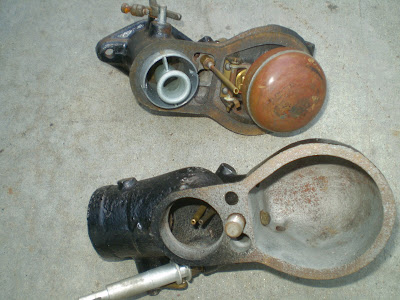Stromberg did indeed bring a patent infringement case against Zenith
(Stromberg Motor Devices Co. v Zenith-Detroit Corp) alleging that
Zenith’s double-venturi carburetor was an infringement on Frank C.
Mock’s patent (U.S. Patent No. 1,404,879) which had been assigned to
Stromberg.
Stromberg prevailed at the trial court level (U.S. District Court for the Southern District of New York) as well as (on the infringement claims at least) when the case was appealed to the Second U.S. Circuit Court of Appeals [23 F.2d 62 (2d Cir 1934)]. Interestingly (or not) the appeal was made by Stromberg (the prevailing party at the trial court level) because they objected to offsets of some $144,437 allowed Zenith by the trial court against the $421,497 in profits Zenith was deemed to have received by its unauthorized use of the Mott patent, resulting in a net award to Stromberg of only $277,060 (which, at the height of the Depression, was still a tidy sum).
This was not the first time (and may not have been the last) that Stromberg sued Zenith for patent infringement. During the Model T era (Stromberg Motor Devices Co. v Zenith Carburetor Co. [254 F. 68, 69 (7th Cir. 1918)]), Zenith was found to have infringed on four patents held by Stromberg.
None of this has much to do with making your Zenith carburetor work more effectively, but the original case mentioned above has reverberated through the legal system and is frequently cited in allowing offsets of federal taxes paid by a losing defendant (e.g., Zenith) on their ill-gotten profits where such patent infringements are made in “good faith” (i.e., non-willful) instead of being conscious and deliberate infringements.
Stromberg prevailed at the trial court level (U.S. District Court for the Southern District of New York) as well as (on the infringement claims at least) when the case was appealed to the Second U.S. Circuit Court of Appeals [23 F.2d 62 (2d Cir 1934)]. Interestingly (or not) the appeal was made by Stromberg (the prevailing party at the trial court level) because they objected to offsets of some $144,437 allowed Zenith by the trial court against the $421,497 in profits Zenith was deemed to have received by its unauthorized use of the Mott patent, resulting in a net award to Stromberg of only $277,060 (which, at the height of the Depression, was still a tidy sum).
This was not the first time (and may not have been the last) that Stromberg sued Zenith for patent infringement. During the Model T era (Stromberg Motor Devices Co. v Zenith Carburetor Co. [254 F. 68, 69 (7th Cir. 1918)]), Zenith was found to have infringed on four patents held by Stromberg.
None of this has much to do with making your Zenith carburetor work more effectively, but the original case mentioned above has reverberated through the legal system and is frequently cited in allowing offsets of federal taxes paid by a losing defendant (e.g., Zenith) on their ill-gotten profits where such patent infringements are made in “good faith” (i.e., non-willful) instead of being conscious and deliberate infringements.








